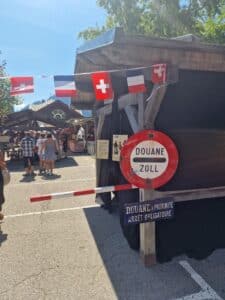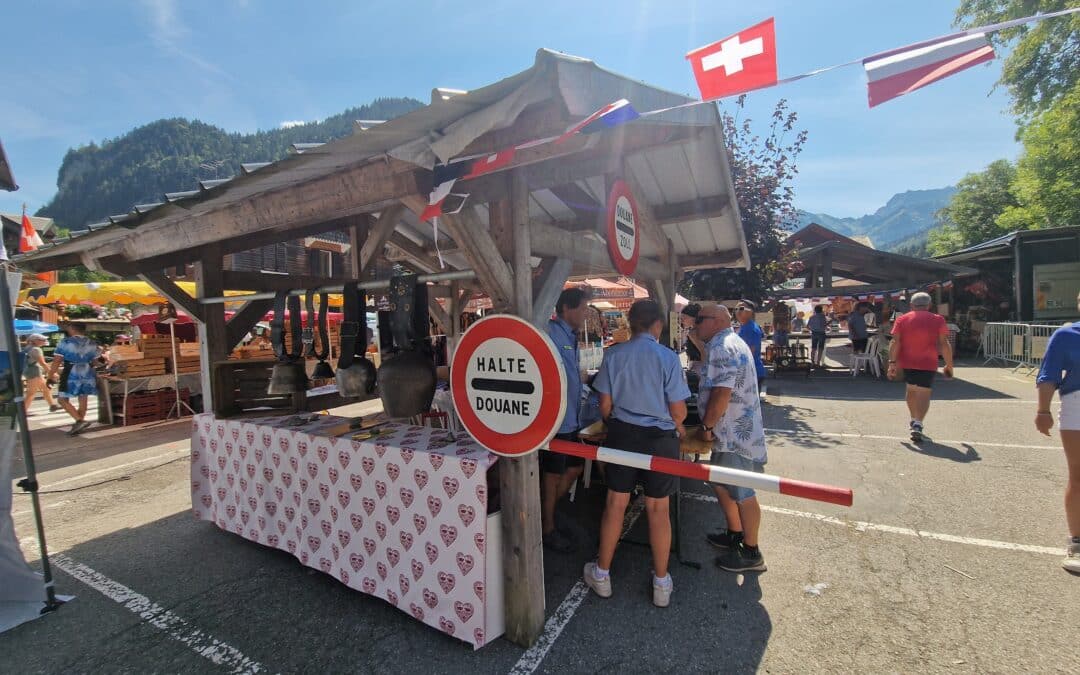A Western in the Savoie
The Abondance Valley, located in the heart of the French Alps, is now primarily known for its breathtaking landscapes and rich history. But behind that serene beauty lies a turbulent history of battles between customs officers and smugglers. Dive with us into the world of smugglers who tried to evade the long arm of the law through clandestine paths!
The Smugglers’ Garden
The Abondance Valley, with its narrow mountain passes and dense forests, provided the perfect setting for smuggling activities. The proximity to the Swiss border made it a strategic area for the smuggling of goods such as tobacco, salt, alcohol, and coffee, which were heavily taxed in France. The natural barriers posed a challenge for customs officers, while smugglers took advantage of their local knowledge and the difficult-to-reach terrains.
The Origin of Smuggling
Smuggling in the Abondance Valley dates back to the Middle Ages, but the phenomenon reached its peak in the 18th and 19th centuries. The French Revolution and the Napoleonic Wars caused economic disruption and led to heavy taxes and trade restrictions. The local population, often poor and dependent on agriculture, saw smuggling as an opportunity to supplement their income. This led to a thriving black market where smugglers flourished.
Gabelous Strike Back
To combat smuggling, special units of customs officers were deployed. These officers, known as “les gabelous,” patrolled the border areas and monitored suspicious activities. They often worked under harsh conditions and risked their lives in confrontations with armed smugglers. In an attempt to cut off smuggling routes, watchtowers and border posts were also built.

Smuggling was a craft. Getting caught red-handed had severe consequences: aside from forfeiting the smuggled goods, penalties could include fines double the value of the goods, imprisonment, or even the death penalty.
Smugglers employed various clever methods to evade customs officers. They usually operated at night, relying on the rugged terrain and secret paths. The use of false bottoms in carts and hiding goods in double-walled barrels were some of the many ingenious tactics.
Even dogs were trained to become proficient smugglers. A dog could even travel alone, armed with a pitchfork and scythe, with smuggled goods attached. Customs officers would hunt down these four-legged smugglers as well, and as bloody evidence of interception, they would cut off a paw and hang it on their hut’s door. The commander would then distribute bounties based on the number of dog paws collected.
Café Tales
The struggle between smugglers and customs officers has led to numerous thrilling stories and legends in the Abondance Valley. One of the most famous tales is that of “Le Chamois Noir” (The Black Chamois), a notorious smuggler who evaded the customs officers for years thanks to his exceptional knowledge of the terrain and strategic cunning. His adventures were later romanticized in local folklore and literature.
Friends and Foes
Smuggling was not a solo endeavor; it involved a whole network of accomplices. Think of farmers who guided the way, villagers who provided shelter, and even the priest who hid goods in his church. It is even said that the cross-border Portes du Soleil ski area owes its existence to the great solidarity that emerged from the collaboration in smuggling.

With improved infrastructure and changes in legislation, smuggling gradually declined in the 20th century. The rise of more efficient transportation and communication methods made it increasingly difficult for smugglers to operate unseen. Moreover, many goods that were previously heavily taxed became more freely tradable due to changing economic conditions and trade agreements. Today, the valley is a peaceful tourist destination, but the stories of the past live on in local culture and memories. The ‘Gabelou’ ski lift, the smuggling festival, and the heroic tales still echo over the counter in a café.
Sources
Archives of the Abondance Valley.
Local historical museums and documentation centers.
Literature on the history of smuggling in the French Alps.


